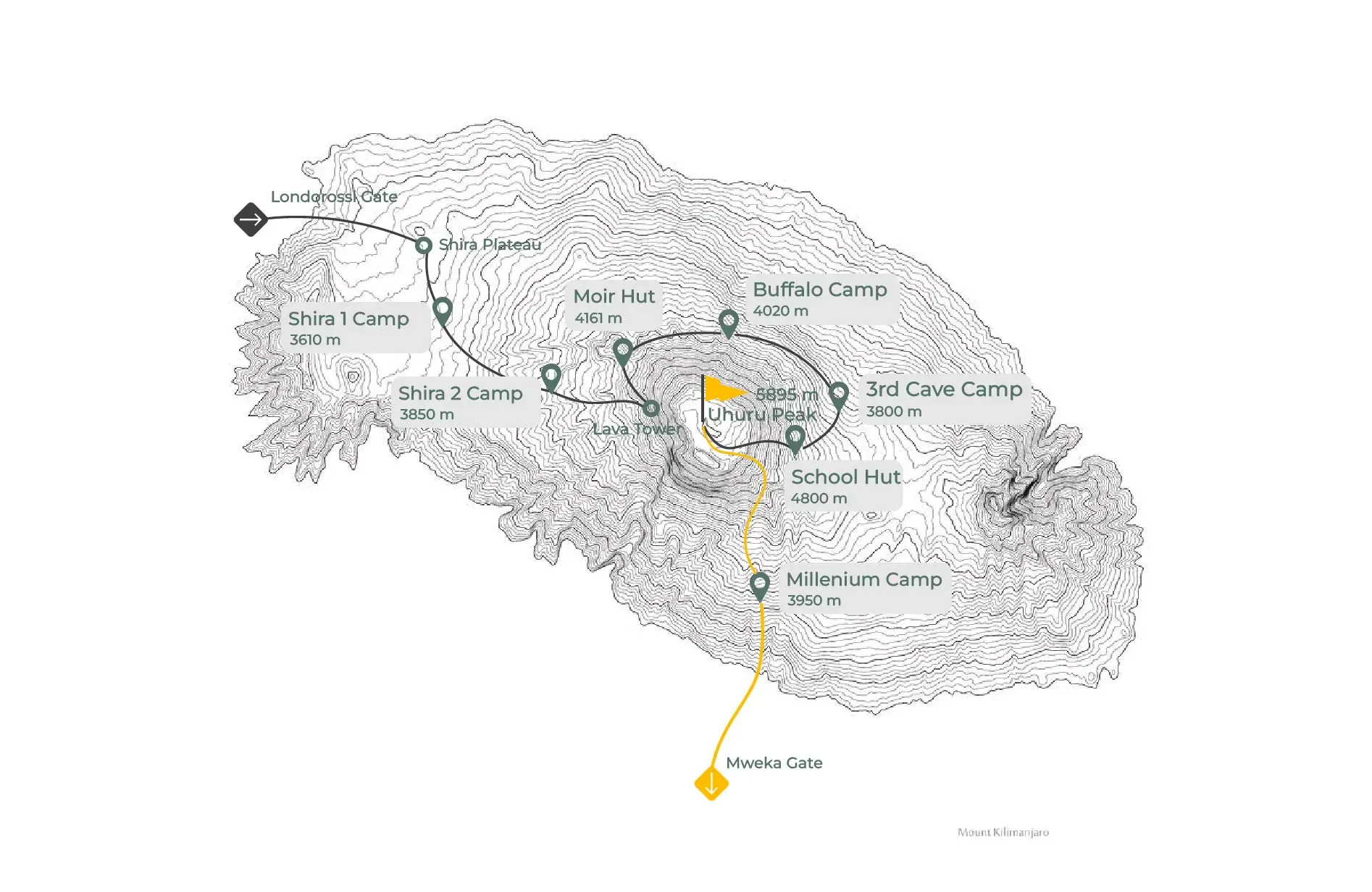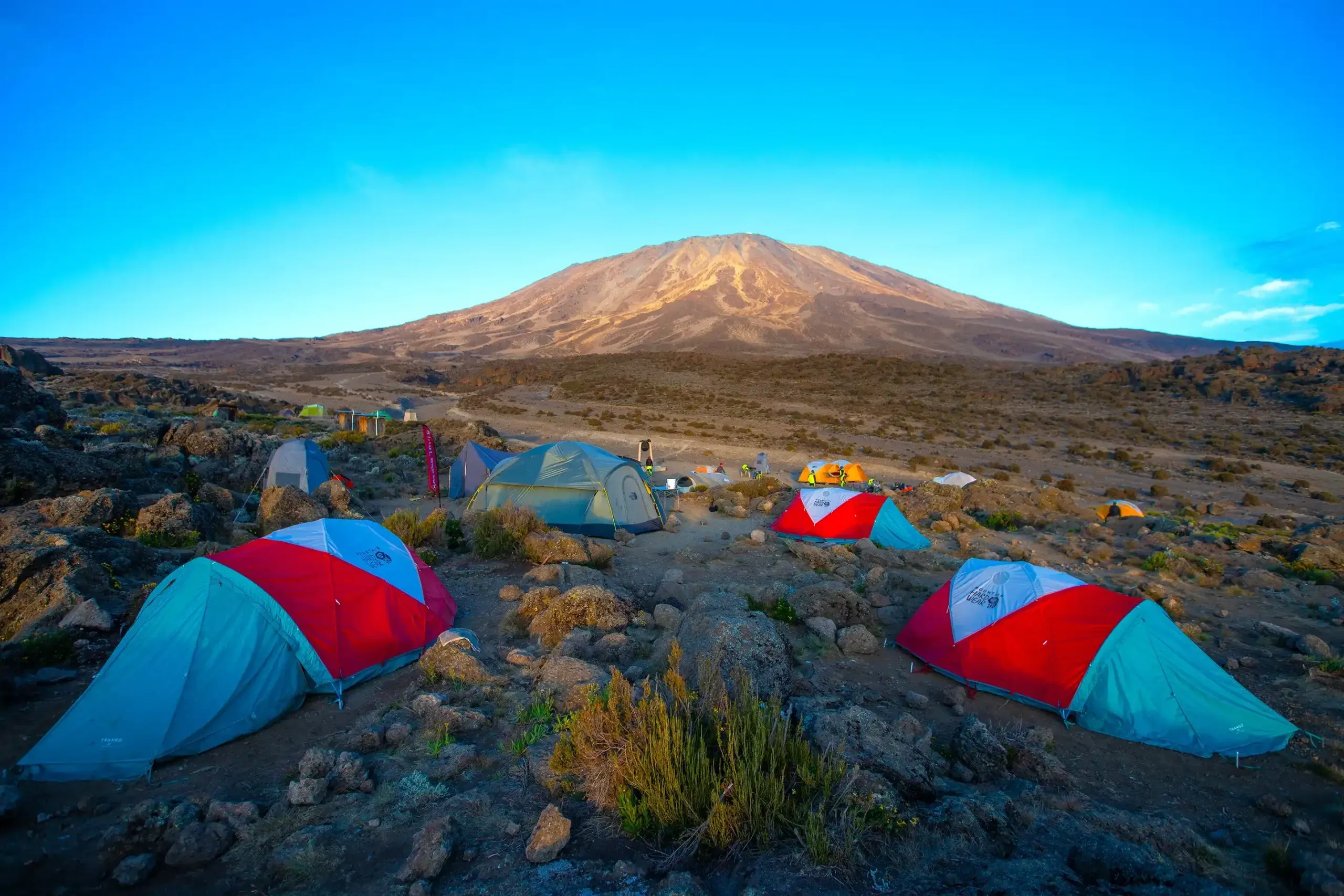The Ultimate Guide to Climbing Mount Kilimanjaro via the Northern Circuit Route
Climbing Mount Kilimanjaro is a dream for adventurers, nature lovers, and thrill-seekers worldwide. Standing at 5,895 meters (19,341 feet), it’s Africa’s highest peak and the tallest free-standing mountain on Earth, drawing thousands of climbers annually. The Northern Circuit Route is one of the newest and longest paths to the summit, renowned for its exceptional success rates, diverse landscapes, and superb acclimatization profile.
If you’re contemplating this challenge, understanding what makes the Northern Circuit special is crucial. It’s more than just a trail; it’s a journey through lush rainforests, moorlands, alpine deserts, and scree slopes, culminating in the awe-inspiring view from Uhuru Peak. Whether you’re a seasoned trekker or seeking a safer, more scenic route, this guide provides all vital details to help you prepare for your Kilimanjaro adventure.

Why the Northern Circuit Route? What Makes It Unique?
Extended Duration & Improved Success Rate
Spanning 7 to 9 days, the Northern Circuit allows more gradual acclimatization, significantly increasing your chances of reaching the summit. The longer itinerary helps your body adjust to high altitudes, reducing the risk of altitude sickness.
Diverse Landscapes & Scenic Variety
This route encircles Kilimanjaro, offering spectacular panoramic views of the mountain and changing landscapes—from dense rainforests and moorlands to alpine deserts and scree slopes. The variety keeps the trek engaging and scenic.
Less Crowded & More Remote
Compared to busier routes like Marangu or Machame, the Northern Circuit is quieter, giving you a more secluded experience. Its remote nature also means fewer crowds and a more authentic wilderness adventure.
Better Acclimatization & Higher Success Probability
The longer route with multiple acclimatization days enhances your body’s ability to adapt, resulting in higher success rates—even for those with less mountain experience.
Cost Consideration
While longer and requiring more days, the Northern Circuit can be more cost-effective per day, especially if included in comprehensive tour packages, offering good value for a premium experience.
What to Expect on the Northern Circuit
Duration & Elevation:
Typical Length: 7-9 days
Starting Point: Londorossi Gate (2,250 meters / 7,382 feet)
Summit Point: Uhuru Peak (5,895 meters / 19,341 feet)
Terrain & Landscape:
Day 1: Dense rainforest with vibrant wildlife
Day 2-3: Moorlands with giant lobelias and groundsels
Day 4-5: Alpine desert with rocky scree slopes
Day 6-7: Circular traverse through scree and glaciers, offering excellent acclimatization and scenic views
Final days: Descent through different zones back to the park gate
Accommodation & Campsites:
Tented camps or huts, depending on your tour package. The longer trek often involves camping, with facilities for cooking and resting along the way.
Physical & Technical Challenges:
Less technically demanding but physically intensive due to the longer duration. Proper acclimatization, physical fitness, and mental resilience are vital.
Step-by-Step: The Journey on the Northern Circuit
Day 1: Londorossi Gate to Mti Mkubwa (Big Tree Camp)
Your adventure begins at Londorossi Gate, where you’ll check in and transfer to the trailhead. The first day involves trekking through lush rainforest, with opportunities to spot wildlife and tropical flora. Expect around 4-5 hours of walking over approximately 8-10 km.
Day 2: Mti Mkubwa to Shira 1 Camp
Leaving the rainforest, the trail opens into moorland zones dotted with giant groundsels and lobelias. The ascent is gradual, taking about 5-6 hours over roughly 10 km, with stunning vistas of the mountain’s northern slopes.
Day 3: Shira 1 to Shira 2 Camp
Continuing across high-altitude moorlands, this day offers panoramic views and a chance for better acclimatization. Trekking takes around 4-5 hours over about 8 km.
Day 4: Shira 2 to Moir Hut
The route reaches the alpine desert, characterized by rocky terrain and scree slopes. The trek lasts approximately 4 hours over 9 km, with dramatic scenery.
Day 5: Moir Hut to Buffalo Camp (via Lent Hills)
This day involves traversing the Lent Hills and circling around the mountain, further enhancing acclimatization. It’s a longer day, about 6-7 hours, with a mix of terrain, offering breathtaking views.
Day 6: Buffalo Camp to Third Cave or School Hut
Climbers continue ascending, approaching the Western Breach or Barafu Camp area, with opportunities to see glaciers and peaks. The walk takes about 4-5 hours over 9 km.
Day 7: Summit Night from Barafu or Crater Camp
This is the most challenging night. You’ll depart around midnight for the final ascent to Uhuru Peak, navigating rocky, icy slopes with crampons. Expect a 6-8 hour climb, culminating in sunrise at the summit. After celebrating, descend to the base camp.
Day 8-9: Descent & Return to Londorossi Gate
The trek back down through the various zones, with a focus on safety and recovery, completes the journey. The descent can take 4-6 hours to reach the gate, where you will conclude your adventure.
Comparison: The Northern Circuit Route & Others
| Aspect | Northern Circuit | Machame Route | Lemosho Route | Marangu Route | Rongai Route |
|---|---|---|---|---|---|
| Acclimatization | Excellent | Good | Excellent | Moderate | Good |
| Trekking Days | 7-9 | 6-7 | 7-8 | 5-6 | 6-7 |
| Campsite Type | Camping & Huts | Camping | Camping | Mountain Huts | Camping or Huts (optional) |
| Difficulty | Moderate to Challenging | Moderate | Challenging | Moderate | Moderate |
| Success Rate | Highest | Higher | Higher | Moderate | Good |
| Landscape Variety | Excellent | Very good | Excellent | Good | Good |
| Crowds | Less crowded | Less crowded | Less crowded | Very crowded | Less crowded |
Tips for a Successful Kilimanjaro Climb via the Northern Circuit

1. Physical Preparation: Focus on cardio fitness, hiking, and strength training 3-6 months ahead.
2. Acclimatization: Longer routes provide excellent acclimatization; follow your guides’ advice on pacing.
3. Gear & Clothing: Layered clothing, sturdy boots, thermal gear, sleeping bags suitable for cold nights, and rain gear.
4. Hydration & Nutrition: Drink ample water and consume energy-dense foods to maintain stamina.
5. Choose Reputable Operators: Ensure your tour company employs experienced guides, proper safety protocols, and environmental responsibility.
6. Health & Altitude Precautions: Consult your doctor about altitude medication, and listen to your body. Promptly report symptoms of altitude sickness.
7. Environmental Respect: Follow Leave No Trace principles, support local communities, and minimize environmental impact.
Safety & Permits
At kilimanjaropackages.com, your safety is our top priority. All necessary permits for climbing Kilimanjaro are included and arranged by our experienced team to ensure a smooth and hassle-free process. We partner exclusively with licensed, professional guides who are well-trained in emergency response, first aid, and high-altitude safety protocols.
We encourage open communication—please inform your guides of any symptoms or concerns during your trek. Rest assured, your well-being is our utmost priority, and we adhere to the highest safety standards to make your Kilimanjaro adventure both safe and memorable.
Best Time to Climb via the Northern Circuit
Dry Seasons: June to October and December to February offer the best weather and safer conditions.
Rainy Seasons: March to May and November tend to be wetter, more challenging, and less ideal for summit attempts.
Climbing Kilimanjaro via the Northern Circuit offers an exceptional, scenic, and successful adventure with a longer, more gradual ascent that maximizes your chances of reaching the summit comfortably. Proper preparation, patience, and a positive attitude are key to making this dream a reality.
Are you ready to embrace this incredible challenge? The mountain awaits!
